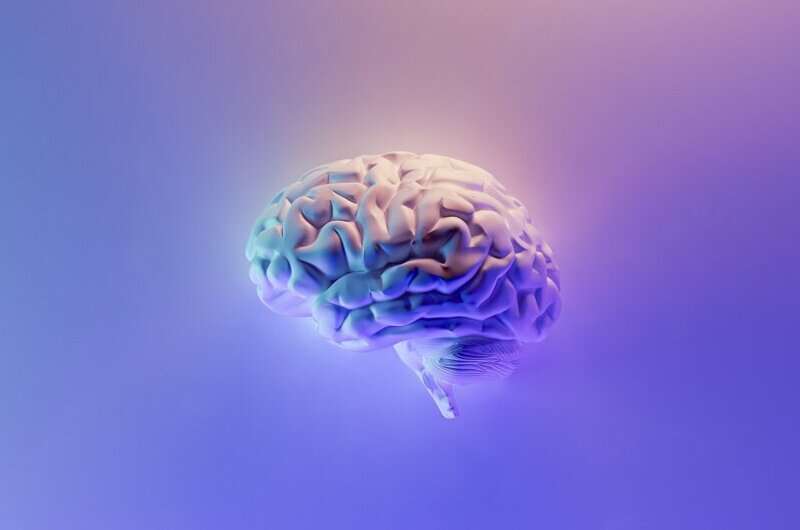This article has been reviewed according to Science X's editorial process and policies. Editors have highlighted the following attributes while ensuring the content's credibility:
fact-checked
peer-reviewed publication
proofread
Researchers induce brain activation using infrared light-controlled drugs

Studying the brain remains one of the most challenging endeavors in neuroscience. Researchers have explored various methods for live imaging and stimulation of deep brain activity. One such method is multiphoton excitation using pulsed infrared (IR) light. This type of light is weakly absorbed by tissues and can penetrate through the bone and deep into organs like the brain. However, it has its limitations to produce focused images and to control cellular activity with precision.
To overcome this, scientists have been exploring three-photon excitation with ultrafast pulsed IR light, to achieve whole cortex imaging and the observation of neuronal activity. Yet, until now, in vivo neuronal stimulation using three-photon excitation had not been reported.
A groundbreaking study, led by the Institute for Bioengineering of Catalonia (IBEC) in collaboration with the ICFO—Institute of Photonic Sciences, both members of BIST, has introduced the first method for controlling brain activity in living organisms using drugs activated by three-photon excitation and mid-infrared light. This method is based on activating a specific receptor for acetylcholine, a vital neurotransmitter involved in various brain processes such as learning, attention, and memory.
To achieve this, researchers utilized PAI, a light-responsive molecule previously developed at IBEC, employing the lowest drug concentration and the longest photoactivation wavelength ever recorded.
The study, published in Angewandte Chemie , was led by Dr. Pau Gorostiza, ICREA Research Professor, member of CIBER-BBN and Leader of the Nanoprobes and nanoswitches group at IBEC and by Dr. Pablo Loza-Álvarez, head of the Super resolution microscopy and Nanoscopy (SNL) lab at ICFO.
"The novelty of these results lies in the demonstration that the activity of drugs can be controlled with IR light, and that most of the photoswitchable ligands previously used in photopharmacology with ultraviolet and visible light are amenable to three-photon excitation using mid-infrared light, which is gentler on tissues," explains Gorostiza.
"Plus, this technique, being IR illumination, provides the opportunity to penetrate deep within the tissue with submicrometric resolutions in all three dimensions. In simple terms, it means we can pinpoint the activation right at the laser beam's focal point, illuminating it externally through the skull," adds Loza-Álvarez.
These results showcase the potential of three-photon pharmacology and open up new horizons for fundamental research in neurobiology and the development of light-based neuromodulation therapies.
The power of light
Light can be harnessed to enable targeted drug action within specific areas of the body through photopharmacology. This innovative approach involves modifying the chemical structure of a drug by adding a light-activated molecular switch, ensuring the drug activates only when exposed to a particular color of light.
In previous research, IBEC scientists tried to activate PAI using one-photon and two-photon excitation with limited reversibility and control in vivo. In their recently published paper, researchers turned to longer wavelength IR light and theoretical calculations to enhance the activation of PAI through multi-photon excitations.
These calculations, performed by the laboratory of Josep Maria Lluch and Jordi Hernando at the Autonomous University of Barcelona suggested that three-photon excitation could be more efficient than the two-photon alternatives, and that the principle could be widely applicable.
Subsequently, the researchers conducted in vivo experiments to validate these theoretical predictions. They used zebrafish larvae genetically engineered to express a fluorescent calcium indicator. Neural activity leads to rapid fluctuations in intracellular free calcium, which is why calcium indicators are commonly employed to visualize neural activity.
This experimental setup allowed them to observe and analyze alterations in calcium levels when the brain was exposed to light stimulation through three-photon excitation.
"The first time we saw the brain responses we were really impressed. We administered the PAI compound in its inactive form, which was uptaken by the zebrafish brain, and when we excited it with the three-photon flashes, the entire brain lit up. Using our setup, we could clearly see the PAI activation as changes in brain activity," said Rosalba Sortino, first author of the study and researcher from Gorostiza's group at IBEC.
In their future work, researchers plan to apply even shorter and more focused stimulation to study these endogenous responses in detail.
More information: Rosalba Sortino et al, Three‐Photon Infrared Stimulation of Endogenous Neuroreceptors in Vivo, Angewandte Chemie International Edition (2023). DOI: 10.1002/anie.202311181


















